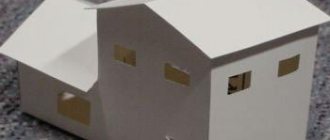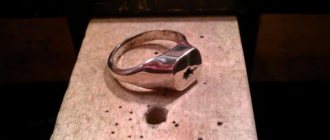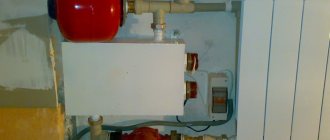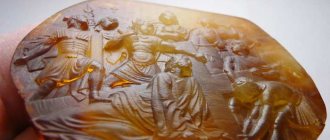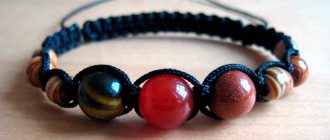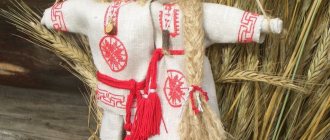Handicraft as a way of self-expression has been traveling with us for thousands of years. Its forms change, some fade into history, others are created by new generations, and others retain their identity for centuries. And in the variety of types of needlework you can always find something that is ideal for you. Do-it-yourself needlework for the home - find the most interesting things for beginners in this review.
You will find out why a rare home blogger can do without macrame on the wall, how embroidery can be an activity tool, and why interior toys in the house are definitely good.
Handmade in the interior
Homemade handicrafts have always been a way of self-expression for women and a real tool for creating special comfort in the home. Those times have not yet been forgotten when the quality of handicrafts became the best characteristic of a potential bride. But even in the age of feminism, probably any housewife is pleased when her handicraft achievements receive compliments from guests and household members.
A modern standard interior is fertile ground for handmade items. Today, home design is dominated by 3 styles: Scandinavian, boho and eco. Let's look at each through the prism of needlework as part of design.
Description of the most popular interior styles:
- Scandi style.
In fact, it is not limited to white walls, dominance of space and natural materials. Many designers claim that what we call Scandinavian style is more appropriately called Nordic. But since the concept of Scandi aesthetics has already been established among the people, we will not contradict it. If you really have a lot of white in your interior, if you have a lot of warm wood and you gravitate towards using natural materials and cozy decorative accents, perhaps you are also an adherent of the Scandi style. And it always goes perfectly with handicrafts: macrame panels, ethnic embroidery, crocheted rugs, pom-poms and wooden installations.
- Boho.
There is a lot of creativity and relaxation in the atmosphere of style. Initially, this style was casually called gypsy because the abundance of flowers simply tired the eyes. Actually, even the origin of the name (Bohemian chic) already says a lot about the style. But bright variations of the style today are inferior in popularity to such an offshoot as eco-boho. Everything is much calmer here: a lot of plants, simple, affordable, natural materials, simple furniture (ideally, made with your own hands), dull colors with white, brown, green and bleached variations of dark colors. Rough textiles, clay dishes, wicker baskets and any personal creativity in any form take root well in the style. That is why a handicraft hobby will not only make friends with boko, it is literally a prerequisite for creating such an interior.
- Eco.
Very similar to eco-boho, but not so narrow. The main condition of this style is only natural materials, only natural colors. But it is not so light and calm in color. For example, you can create an eco-style with massive furniture and beautiful, bright, colorful textiles. Ideally, of course, it should be textiles using natural dyes. In the same way, eco can, on the contrary, be minimalistic. There may be very little decor in it: for example, only knitted covers for clay flower pots.
But generally speaking, modern interiors are very responsive to any interesting handicraft ideas. You can start by arranging your dacha and garden, if you don’t yet decide to change the appearance of your apartment. And there are a lot of types of handicrafts that will become guides to the world of handmade decor. And each one impresses with its prospects.
What is a DIY business?
Crafts are returning to Russia, and now the opinion is increasingly heard that the country is quite capable of boosting its economy through creative products and services. This is not new in the world. The most high-profile example is Korea, whose share of creative industries and government-supported crafts has created another economic miracle. Many economists in Europe and the United States call the strategy of supporting creative industries one of the most important. This is how it is possible to develop not only villages, but also post-industrial cities. According to the Agency for Strategic Initiatives, in our country the contribution of small craft enterprises to the economy in 2022 is 4.37% (for comparison: in many countries this figure starts from 8%). Before the pandemic, the creative skills market was estimated at 3 trillion rubles.
Do-it-yourself business is a hobby?
Not certainly in that way. Whoever wants to do what they love and make money from it. The first difficulty is that a hobby is something that people do in their free time, for the soul and desire. You can make stable money from this only when you stop treating your work as a hobby. An idea is not yet a business; you will have to not only do something with your own hands, but also register your business. After all, in addition to handicrafts, a do-it-yourself business includes thinking through a strategy, official registration, complex calculations, creating sales channels, promoting accounts on social networks, and searching for investments. Alone or in a team - you have to do it all. This is what separates a hobby from a real business.
So, David and Wendy Kast from Illinois initially made wax candles as an experiment. The couple knew about the types of wax, oils and wicks, gave them to friends and asked for feedback. So they improved candles and provided them (as gifts) to family and friends. Both of them suffered from congenital deafness, and when they lost their jobs in 2001, they decided to earn money from their hobby. In addition to hundreds of types of holiday and household candles, they began to produce candle toys and souvenirs. Today, their company's annual turnover is estimated at $1 million.
In our country, radiologist Anna Levkovich began sewing her first toys as a gift to her beloved son and friends. Today, her tame dolphins are known in more than 65 countries around the world, but to do this, she had to decide to take the plunge, open a workshop and devote herself to business.
Do-it-yourself business is a craft
By 2022, the global creative industry will account for 3% of global GDP. It is believed to employ approximately 29 million workers - approximately 1% of the world's population. This is not the first time that humanity has experienced a surge of interest in crafts and art, a return to items made by hand or created in a traditional way (handmade butter, homemade preserves, etc.). At the beginning of the 20th century, the Arts and Crafts movement emerged in England, which believed that mass-produced products led to degradation and disease.
The revival of craft in our country is still very restrained. However, the first steps are already noticeable. Thus, on Elagin Island in St. Petersburg, at the Museum of Art Glass, in 2022, they created the only glass-blowing workshop in the country, where they not only demonstrate glass processing technologies to those interested, but also teach the craft. In different cities (Moscow and St. Petersburg most often) handmade fairs are held and shops operate. There is talk in the country that it is important to reorganize the artisan sector, barely visible to politicians and experts, which consists of individual craftsmen, wholesalers buying products of nameless authors, and retailers, into an independent non-industrialized industry - the creative industry, to introduce benefits, reduce duties, help with copyright protection, issue grants for training and advanced training, as well as provide start-up loans from the bank. Positive examples are before our eyes: in China, artisans participate in 17% of exports, in India - more than 6%.
Decoupage
Decoupage is a technique for decorating various household items, based on fixing a drawing, picture or ornament on a base. That is, any thing can be transformed by visually changing its surface. For example, take a bottle and cover it with images from napkins in the Provence style: and now you no longer have an empty, indistinct container, but a beautiful vase that matches the interior of the kitchen.
Handicraft ideas for the home using decoupage technique:
- The kitchen table top can be covered with decoupage. The ornament on the tabletop, especially artificially aged, looks powerful. Ideally, the same pattern should be repeated elsewhere in the kitchen. Therefore, for example, a flower box standing on a windowsill can also be transformed using decoupage.
- Casket. You can buy a standard wooden blank and turn it into a product that will reflect your chosen interior style.
- Kitchen cabinets. If the old set has been standing for more than one year, but has lost its freshness in appearance and is worn out in some places, you can arrange for it to be restored, including by using decoupage.
Once you get the hang of it, ideas for what else to elegantly cover will line up one after another.
Classic ancient types of needlework
Sewing and flower making
| Sewing is one of the most famous in needlework. It is carried out using a variety of seams and stitches, needles and fishing line. Time goes by, and I will tell you that sewing is very popular at the moment. It is very diverse. People are discovering more and more new techniques. Sewing is applicable to literally everything. It is a fundamental part of our everyday life. | |
| Flower making is probably the most beautiful form of art. It carries so much femininity, tenderness and attractiveness. Her Majesty Nature has gifted us humans with an incredible number of flowers. And it is flower making that makes it possible to create flowers that will never fade and will forever delight you. In their creation, as a rule, nylon, nylon and stretch fabrics are used. |
Patchwork and applique in needlework
The patchwork technique is a type of folk art in which pieces of different objects are sewn together in a mosaic pattern to form a finished product. Most often, blankets and rugs are made using this technique. So, in order to create a beautiful blanket, you need to prepare the fragments, then start sewing them into blocks, and then join the finished blocks together and sew the lining to the fabric.
Applique is a method of connecting various parts, be it fabric or paper. You can sew and glue your ideas. You can also combine applique with embroidery. The main task is to turn on your imagination and create.
Quilts are creations made from pieces of fabric that are filled with cotton wool when stitched. This method produces wonderful toys, potholders, blankets, and can also serve as decoration for clothing.
Artistic processing of leather
Artistic processing of leather - we immediately remember the good old Nikita Kozhemyaka. And this is true, because already in those distant times, leather goods were very popular. We also know that even primitive people wore the skin of killed prey. It turns out that this craft is one of the most ancient. But working with leather, and even more so, its artistic processing, is not an easy task, because it is very important to know about all the intricacies of the preparatory operation for processing leather.
Weaving
Weaving is a craft that arose in the late Neolithic, and is therefore considered one of the most ancient. Fabric or linens are produced on weaving machines.
Carpet weaving
Carpet weaving – carpets whose purpose is to decorate walls and floors. A carpet is a textile product that is decorated with patterns of many colors. Carpets can be hand-made or machine-made .
Matting is a technique for weaving carpets or rugs from environmentally friendly fibers.
Burnout
Burning (pyrography) – among the many types of wood finishing, decorative burning occupies a special place. Pyrography is used in the manufacture of various souvenirs and furniture decor. The most suitable material for burning is plywood. And most importantly, the composition is an electric burner.
Fabric burning (guilloche) is a type of needlework that involves finishing products with openwork lace and making appliqués by burning using a guilloche machine.
Hot stamping is a printing process of burning onto leather, wood, cardboard.
Type of needlework made from wool Felting
Felting is a technique in which wool is soaked in a hot soap solution, then ironed and rubbed in different directions, gradually increasing the pressure.
Wet felting is when unspun wool fibers are felted due to sliding and repeated uniform influence on them.
Dry felting is the process of repeatedly piercing wool with a needle. At the end, the wool should unite into a dense, homogeneous structure, from which various products are then formed.
Khokhloma
Khokhloma - Folk art craft of painting wooden parts. The main colors of the painting are scarlet-red, black and vine. Basically, masters depict rowan berries and strawberries.
Handmade Batik
Batik is hand-painted fabric. An unconventional method of applying patterns and ornaments appeared in distant Indonesia. And in Europe, this method was discovered already in the 19th century. It became widespread thanks to the discovery of aniline dyes.
Cold batik - drawing is carried out using a contour stroke of a special composition. Artistic expressiveness is given by color stretches that are located inside separate closed planes.
Hot batik is a type of batik in which paraffin or molten wax plays a key role. When the wax is removed from the dyed fabric, then a multi-colored pattern is obtained on the colored fabric. Due to the fact that contour lines are not necessary here, soft transitions of tones are possible in the form.
Artistic carving
Artistic carving is a type of artistic application of a design on a workpiece using a chisel, chisel, ax, or chisel.
Stone carving is one with the types of art of sculpture. This type of creativity requires mental persistence and special perseverance, due to the fact that pebble is an unexpected material and it is quite difficult to give it the correct configuration due to its density.
Bone carving is, one might say, a type of art that has been preserved and reached our time since the times of primitive people. For this carving, tusks, whale teeth, fangs, skeletal bones, and horns are mainly used.
Wood carving is the processing of materials using various cutting and turning techniques. The work is very delicate and requires maximum concentration. Also, you will need quality tools.
Mosaic is a pattern or image laid out from small parts of any material.
Stained glass is a picture or pattern made of colored glass.
Sculpture is the art of creating three-dimensional works of art by carving, sculpting or casting.
Birch bark is a folk craft in which the outer layer is removed from the birch bark, usually it is golden in color. Birch bark is a very plastic natural material. Treated birch bark is woven in two directions: obliquely and straight.
Wine weaving is a handicraft in which the main material is a vine. Having mastered this technique, you can make a variety of baskets, chairs, unusual vases and chests, thereby decorating your home life.
Painting is another ancient type of needlework.
Painting is the art of decorating any surface with paints.
Gorodets painting is a very bright and plot-rich painting. The designs are dominated by a variety of animals, most often roosters and horses, and the products are also painted with various floral arrangements.
Polkhov-Maidan painting is a subject ornamental painting. Among the painting motifs, the most common are landscapes and households.
Mezen wood painting is a type of painting of spinning wheels and ladles. The most widely used ornaments are schematically depicted figures of deer and horses, which break off at the borders of the product.
Zhostovo painting is a type of painting for which metal is the main material. This is probably the most difficult and time-consuming painting, as it requires thorough preparation of the base for painting, and after painting there are many stages of drying.
Semenovskaya painting - originates from the entire famous Semenovskaya spoon with a special ornament. But already in 1970, a factory appeared that produced a matryoshka doll that holds a flower arrangement in its hands - this is precisely the main element in this painting.
Gzhel is painting on a white background of a porcelain product with blue paints, it is also called “covering”. Gzhel painting is divided into three: main, ornamental and narrative. The main one is plant painting, the ornamental one is geometric shapes along the edges of the product, the subject one is the seasons and nature.
Stained glass painting is an independent decoration of glass surfaces. For painting, acrylic or silicate fabrics are required.
Arts and crafts
Quite a large section of fine arts. It contains various branches of difficult creative and mental activity, which is aimed at inventing incredible creations with practical and aesthetic functions.
Macrame
In Soviet times, many people had flowerpots in which liana-shaped flowers lived in their hallways and in other parts of their apartments. But macramé can’t even come close to the variety, splendor and taste demonstrated by modern craftswomen. If you follow home bloggers on social networks (those who devote a page to home decor, comfort, renovation), then almost every first such blogger has a macrame panel hanging on their wall.
And this is not because they mindlessly copy each other - it’s just that macrame today is a universal decor from which the room only benefits. This is an ideal craft for the comfort of your home. And the choice of threads and yarns today is huge: you can choose an option that will harmonize with the color of the interior. The basis of the future craft will be an ordinary branch.
Pompoms, cones and acorns, wooden blanks, and beads are woven into macrame. This technique is used to weave dream catchers and make lampshades and the walls of a baby’s cradle. The products have a cozy look, and their delicacy is organic and self-sufficient - do not try to give things a more expensive status. The simplicity and naturalness of the work is advantageous.
Tools for assembling a sofa
Every home craftsman must have all the necessary tools, without which work will be impossible.
Most often, the following tools are used to assemble a sofa:
- Hammer;
- Screwdriver;
- Screwdrivers;
- Hexagons;
- Roulette;
- Stapler;
Embroidery
Satin stitch, cross stitch, and voluminous embroidery are, of course, still in demand. But modern trends in this type of needlework deserve no less attention. Take inspiration from Hannah Hill: her embroidery is perceived as a protest. But she expresses her social discontent not through aggression, but through the creation of meaningful, aesthetically valuable works. And this is an example of the fact that you can embroider anything - a creative approach is welcome.
Hannah Hill Embroidery
Another source of inspiration is the work of Teresa Lim. Her embroidery is called animated paintings. She embroiders the places she has visited - landscapes and city sketches. Embroidery that has its own personality is what is relevant today: you can embroider, for example, insects in a stylization reminiscent of Mexican flavor. Or you can sew bags and household bags from linen fabric, which will be decorated with minimalistic floral embroidery.
Handmade: the value of what is made by hand in the modern world
An item created with one’s own hands has a significantly higher price than one produced in large numbers in production. This is due to the fact that handmade does not imply the possibility of creating identical objects, which means that the value of handmade work mainly lies in its exclusivity. Even if the same object is created again, it will differ from the previous one in some details, since a person is not able to exactly repeat the previous copy.
Also, the advantages of designer items are that they:
- have their own energy;
- endowed with character and soul;
- have an individual history of creation, which is directly related not only to the author, but also to the customer.
Also, the value of handmade work is due to:
- longer time costs for the manufacture of an individual item;
- careful elaboration of the image;
- individual approach to each object;
- using more expensive materials.
The most important advantage of things made by hand is that they do not tend to lose their value, as is the case with industrial production. On the contrary, exclusive items only become more expensive over time.
Sewing
In sewing there is even more scope for handicraft imagination. Any little thing for everyday life can be sewn yourself, rather than bought in a store.
Bumpers for a baby crib
What to sew:
- hot mats (lunch mats);
- seats for a chair or stool (for example, using the patchwork technique);
- covers for sofa cushions;
- curtains (including for kitchen cabinets);
- interior toys;
- napkins and potholders;
- kettle warmer;
- bedding and toys for the baby's crib.
If you have a sewing machine at home, that's good. Sewing simple decor does not require global knowledge of sewing technology.
Mosaic
Mosaic is not only about the kitchen and bathroom. The most interesting ceramic mosaic inserts are worthy of decorating your living room and hallway. These can be installations on the wall, for which special calculation programs on the Internet will help you create a plan.
By the way, mosaics are also handicrafts for the garden. Because if you lay out a table on the veranda with pieces of broken (but once beloved) dishes, you will get not just a new tabletop, but also a reason for pride - not a table, but a work of art. Then you will want to lay out the table in the apartment with broken tiles, which is also very interesting and looks impressive as a result.
You will find a lot of ideas for the garden in this video.
Bouquets of sweets and fruits
Recently, edible bouquets of sweets or fruits have become very popular. Such a delicious original gift can be presented for a birthday, wedding, anniversary and any other special event. If you have creative abilities and want to start a small business of your own, try creating such masterpieces with your own hands. People who do not have such skills can take special courses from professionals.
The profitability of the business for making sweet bouquets is 40%. The demand for such goods does not fall at any time of the year. To make bouquets you don’t need any complicated equipment. All you need is a few sharp knives, skewers on which you will string the fruit and utensils for the finished bouquet. If things go well, make a catalog of your work and create your own website on the Internet where you can accept orders for making sweet bouquets.
Cork decor
Simply collect wine corks in a container, and then turn them into a hot mat, or even a mat for the bathroom. Relatively fast, relatively simple and certainly for the sake of eco-style. You can also use corks to lay out a narrow strip of wall in the kitchen, build a tray and make a tall vase.
Corks are a good material for covering a not-so-aesthetic flower box, photo frame or watch. You can use them to make a massage mat under the kitchen table so that you can simultaneously drink tea and massage your feet that are tired during the day.
Types of fasteners
Modern fasteners that are used when assembling furniture ensure the strength and durability of the structure, as well as its aesthetic appearance, since parts are fixed in a hidden way whenever possible, and those fasteners that remain outside are masked using special plastic linings to match the furniture .
Table 3. Types of fasteners
| Name of fastening element | Description |
Dowel | Dowels made of wood are used for preliminary fixation of two parts. After this, the structure is fastened with hardware. |
Furniture corner | Serves for fixing parts located at an angle of 90 degrees. This method is popular, but somewhat outdated and has its drawbacks - the element is not hidden, looks bulky and becomes loose over time. Corners come in plastic and metal. |
Confirmat | Modern furniture in most cases is assembled using confirmats - furniture screws, the threads of which, compared to conventional self-tapping screws, are larger, which ensures better fixation in the solid slab. After the screw is screwed in, the visible metal part is masked using a plastic plug to match the furniture. |
Eccentric coupler | Hidden fasteners used in the assembly of modern cabinet furniture from laminated chipboard. The holes for it are made in the factory using a Forstner drill. Considering that the thickness of the slab is 16 mm, and 12 mm must be selected for fasteners, the drilling accuracy must be ideal. |
Pinch bolt | Used to tighten two parts together. For example, bed bases and headboards. |
Stone decor
Pebbles collected at sea can also be turned into original home decor.
What can be made from stones:
- hot coasters;
- cover flower pots with them;
- panel on the wall;
- track on the table;
- line the bottom of a large candlestick with them;
- frame for the mirror.
Again, an excellent solution for those who consider eco-style the best design direction for their own home.
Using pom poms
When choosing DIY handicrafts for your home, pom-pom rugs will be one of the first to be considered. Even a preschooler can learn how to make pom-poms, but an adult can use them correctly in the interior.
How to use these fluffy balls:
- for making a bedside rug;
- to create a soft seat-cover on a chair or stool;
- as part of a decorative wall panel;
- for decorating a baby crib;
- for decorating curtains or curtains in a doorway.
Take chopsticks from a bamboo hot stand and tie them with green threads. Glue bright (one-color or multi-colored pom-poms) at the base and place in a vase - such cute flowers will delight you all year round.
Stuffed Toys
If you like to knit, pay attention to soft amigurumi toys. This knitting is not necessary for a pro, but the toys turn out to be the cutest. For those who are more inclined to sew, the technique of making tilde dolls presents a field of wide possibilities. Such toys harmonize the interior and are often perceived as alive: you want to say hello to them, change their outfits on holidays, and even bring them candy (which, as some needlewomen claim, can mystically disappear at night).
Another popular trend is toys made of natural fabric (linen, cotton, wool) with embroidered faces and outfits. Such ethno-style dolls look very good in an interior with the same focus. Toys can be in the form of pendants (birds arriving in the spring), pillows (you can lie on a toy), or an independent piece of furniture.
What other crafts can you learn at home on your own?
1) If you love handicrafts, then you might like beadwork. Jewelry made from beads - the ancestors of modern beads - were popular back in Ancient Egypt, but even today fashionistas do not deny themselves the pleasure of wearing costume jewelry made from beads and bugles.
2) Nothing can transform an interior as quickly as properly selected textiles. And if you don't want to waste time searching for the right fabrics, you can embellish existing canvases using inexpensive Indian stamps, stencils or knot dyeing techniques.
3) The aromas of homemade soap will add comfort to the home atmosphere. And you can transform into a soap maker in your own kitchen.
4) The craft of a mason is one of the oldest, because stone buildings have existed since primitive times. If you also want to build stone walls, but you live far from the river and mountains, and there is simply no suitable material in your area, you can create the stone yourself. Read about the technology for manufacturing artificial stone here.
5) You are unlikely to learn how to turn shapeless clay into dishes and jars on your own. But if you know a potter, perhaps he wouldn’t mind taking you on as his apprentice. And you, having mastered the basics of the ancient craft, will turn from an apprentice into a pro in a couple of years. Read about the secrets of turning clay into household utensils here.
Subscribe to our Telegram channelExclusive posts every week
Crafts made from natural materials
If you like to glue, then coffee beans, cereals, even pasta, as well as shells and pebbles, will become new “clothes” for old things. For example, we pasted over an old vase with sea pebbles, and we get a new interior element. Coffee beans are used to create fragrant paintings that suit a cozy kitchen.
Long garlands of beads are made from painted pasta, which can be successfully arranged on painted branches in a floor vase - a nice home installation. On New Year's Day, small Christmas tree decorations will appear on such beads, on Valentine's Day - paper hearts, and with the arrival of summer - flowers made of crepe paper.
You will find more creative ideas for creativity in our article: “Corks, burlap and wallpaper remnants - how to make a real interior dessert from this? Ideas for creativity, creative and interesting DIY crafts.”
Men often become attached to women's hobbies, because decorating their home is a normal desire of any family member. It’s easier to buy something ready-made in a store, but even a perfectly constructed design cannot compare with a lively and warm interior, in which much is done by the hands of the owners.
Anti-freeze
Making anti-freeze in the garage with your own hands is a simple and quite profitable business.
During the cold season, such goods are in great demand. Despite the fact that there is a high level of competition in this area, there are usually no problems with the sale of such products. The main indicators of the success of this mini-production idea at home are price and quality. If you offer customers an inexpensive, but at the same time, high-quality product, permanent markets will quickly be found. A small home mini-production of anti-freeze, which employs 5-6 people, produces about 5 thousand liters of finished products per day. Its cost is 8–10 rubles. If you sell 100 thousand liters of anti-freeze monthly at a wholesale price of 15 rubles per 1 liter, you can get 600–800 rubles in profit. The only drawback of this idea of mini-production at home is its pronounced seasonality. Demand for such goods begins to grow in November. In the warm season, anti-freeze can be safely removed from store shelves, but during the season you can make good money selling it.
Since alcohol-containing raw materials are used to produce anti-freeze products, the production of such products is subject to licensing. Purchasing a license will cost you approximately 60 thousand rubles. An automatic production line costs from 1 to 3 million rubles. If you do not have a large start-up capital in order to obtain all the permits and purchase special equipment, at first you can work illegally, using inexpensive mini machines for home production. This will allow you to collect the amount necessary to start. All initial investments pay off in 1–1.5 years.

